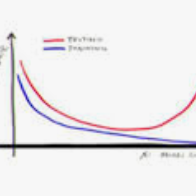This paper is devoted to a rigorous mathematical foundation for the convergence properties of the strain-smoothed element (SSE) method. The SSE method has demonstrated improved convergence behaviors compared to other strain smoothing methods through various numerical examples; however, there has been no theoretical evidence for the convergence behavior. A unique feature of the SSE method is the construction of smoothed strain fields within elements by fully unifying the strains of adjacent elements. Owing to this feature, convergence analysis is required, which is different from other existing strain smoothing methods. In this paper, we first propose a novel mixed variational principle wherein the SSE method can be interpreted as a Galerkin approximation of that. The proposed variational principle is a generalization of the well-known Hu--Washizu variational principle; thus, various existing strain smoothing methods can be expressed in terms of the proposed variational principle. With a unified view of the SSE method and other existing methods through the proposed variational principle, we analyze the convergence behavior of the SSE method and explain the reason for the improved performance compared to other methods. We also present numerical experiments that support our theoretical results.
翻译:本文专门用一个严格的数学基础来解释分压元素(SSE)方法的趋同特性。SSE方法通过各种数字实例,表明与其他平滑压方法相比,趋同行为已有所改善;然而,没有理论证据表明这种趋同行为。SSE方法的一个独特特点是,通过完全统一相邻元素的紧张,在各元素中构建平滑的紧张区。由于这一特点,需要进行趋同分析,这不同于其他现有的松散方法。在本文中,我们首先提出一种新的混合变异原则,将SSE方法解释为这一方法的加勒金近似。提议的变异原则是众所周知的Hu-Washizu变异原则的概括化;因此,现有的各种发宽融方法可以用拟议的变异原则来表达。在对SE方法和其他现有方法的统一看法下,我们通过拟议的变异原则,分析SSE方法的趋同行为,并解释与其他方法相比改进性能的原因。我们还提出支持我们理论结果的定量实验。




